Live CE Webinar Broadcasts
Register today for a full slate of clinical presentations by key opinion leaders in implantology and restorative dentistry. While each course stands alone, the continuum is best experienced by attending all 8 programs, which develop all facets of multidisciplinary care for patients with implants.
Broadcast 7 – January 18, 2018@ 7 PM ET
New Ceramics, CAD/CAM, Implants, and the APC-Zirconia-Bonding Concept
Broadcast 8 – February 8, 2018 @ 7 PM ET
Restorative Planning Challenges in Today’s Aging Population
Stephen Parel, DDS
On-Demand CE Webinars
For viewers just joining the continuum or those who wish to review previous lectures, Compendium is please to make these courses available on-demand. Click below to view the archived content at your convenience.
Originally Broadcast – July 20, 2017
Anterior Immediate Tooth Replacement: Lessons Learned From 20 Years
Joseph Kan, DDS, MS
Originally Broadcast – August 17, 2017
Minimizing Risk: Screw Retained Versus Cemented Implant Restorations
Sreenivas Koka, DDS
Originally Broadcast – September 6, 2017
Sundeep Rawal, DMD
Originally Broadcast – October 12, 2017 @ 7 PM ET
Implant Biomechanics and Material Selection for Predictable Results
Steve Hurson
Originally Broadcast – November 30, 2017 @ 7 PM ET
Advances in Site Development to Support the Restorative Result
BARRY P. LEVIN, DMD
Broadcast 6 – December 14, 2017 @ 7 PM ET
The Evolution of Immediate Implant With Immediate Provisional Restoration
David Gelb, DDS

“Digitally Driven Dentistry”: Utilizing Advances in Science and CAD/CAM Technology to Deliver Restorative Excellence
Sundeep Rawal, DMD
Broadcast 3 –September 6, 2017 @ 7 PM ET
Diagnostic and guided surgery planning software, in conjunction with CAD/CAM systems, allows clinicians to implement new technologies to make treatment protocols more efficient and less time-consuming, especially for innovative implant fixed and removable therapies. This course will present a detailed, step-by-step approach to utilizing these CAD/CAM innovations and demonstrate the advantages technology can provide in daily dentistry. Specific clinical processes that can benefit the practitioner will be highlighted.
- Discuss the importance of thorough diagnosis and treatment planning using the interdisciplinary “team approach”
- List guidelines for proper patient selection, treatment planning, indications/contraindications, and diagnosis with the end prosthetic result in mind
- Describe the digital workflow required to facilitate treatment from the single-tooth to the full-arch implant restoration
Learning Objectives
Register Now

“Digitally Driven Dentistry”: Utilizing Advances in Science and CAD/CAM Technology to Deliver Restorative Excellence
Sundeep Rawal, DMD
Originally Broadcast – September 6, 2017
Diagnostic and guided surgery planning software, in conjunction with CAD/CAM systems, allows clinicians to implement new technologies to make treatment protocols more efficient and less time-consuming, especially for innovative implant fixed and removable therapies. This course will present a detailed, step-by-step approach to utilizing these CAD/CAM innovations and demonstrate the advantages technology can provide in daily dentistry. Specific clinical processes that can benefit the practitioner will be highlighted.
- Discuss the importance of thorough diagnosis and treatment planning using the interdisciplinary “team approach”
- List guidelines for proper patient selection, treatment planning, indications/contraindications, and diagnosis with the end prosthetic result in mind
- Describe the digital workflow required to facilitate treatment from the single-tooth to the full-arch implant restoration
Learning Objectives
View On-Demand CE Webinar

Fully Edentulous Options for the Aging Patient
Stephen Parel, DDS
Broadcast 8 – February 8, 2018 @ 7 PM ET (tentative date)
Aging patients are subjected to an increasing variety of health challenges. Among these are a constantly changing array of medications with intraoral side effects, significant loss of facial soft-tissue integrity, and/or the increased effects of osseous trauma with longer-term removable prosthetics. This presentation will consider oral healthcare for a senior patient population in the present era of osseointegration, with a focus on the use of implants to counter the effects of bone loss with aging, and will discuss treatment planning.
- Discuss various health challenges aging patients face as life expectancy increases
- Explain the progression of full-arch prosthetic options that has led to the present-day use of dental implants
- Describe the treatment planning that is involved in providing aging patients enhanced quality of life through dental implants
Learning Objectives
Register Now
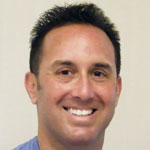
Advances in Site Development to Support the Restorative Result
Barry P. Levin, DMD
Broadcast 5 – November 30, 2017 @ 7 PM ET
Despite the many advances in ceramics, composite resins, and zirconia, even the most elegant restorative therapies require a biologic frame. Healthy and stable hard and soft tissues must surround esthetic and functional restorations. The development of recombinant growth factors, bio-absorbable scaffolds, and various graft materials has enabled surgeons to recreate or preserve the tissues necessary to achieve optimal outcomes. This presentation will demonstrate site development prior to and simultaneous with dental implant placement.
- Discuss novel options and techniques for ridge augmentation prior to implant placement
- Describe how immediate tooth replacement can be most successful with simultaneous augmentation
- Discuss how the surgical and restorative team synergy results in predictable, stable, long-term results
Learning Objectives
Register Now
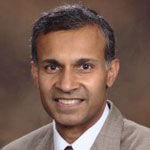
Minimizing Risk: Screw-Retained Versus Cemented Implant Restorations
Sree Koka
Broadcast 2 – August 17, 2017 @ 7 PM ET
The ideal implant-supported fixed restoration provides easy retrievability, low risk of biologic complications, and reduced need for additional treatment procedures such as grafting. Screw-retained restorations provide for these three important outcomes, while cement-retained restorations introduce unnecessary risks. Through careful diagnosis/treatment planning, prudent surgical technique, and placement of a screw-retained restoration, exceptional patient outcomes result that are maintained over the long term.
- Describe the benefits of screw-retained restorations
- Discuss why treatment planning should be undertaken to facilitate screw retention
- Explain why cement-retained restorations are associated with increased risk of biologic complications/adverse events, reduced retrievability, and inferior patient outcomes
Learning Objectives
Register Now

Minimizing Risk: Screw-Retained Versus Cemented Implant Restorations
Sree Koka
Originally Broadcast – August 17, 2017
The ideal implant-supported fixed restoration provides easy retrievability, low risk of biologic complications, and reduced need for additional treatment procedures such as grafting. Screw-retained restorations provide for these three important outcomes, while cement-retained restorations introduce unnecessary risks. Through careful diagnosis/treatment planning, prudent surgical technique, and placement of a screw-retained restoration, exceptional patient outcomes result that are maintained over the long term.
- Describe the benefits of screw-retained restorations
- Discuss why treatment planning should be undertaken to facilitate screw retention
- Explain why cement-retained restorations are associated with increased risk of biologic complications/adverse events, reduced retrievability, and inferior patient outcomes
Learning Objectives
View On-Demand CE Webinar
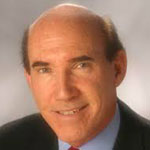
The Evolution of Immediate Implant With Immediate Provisional Restoration
David Gelb, DDS
Broadcast 6 –December 14, 2017 @ 7 PM ET
Today it is possible to replace teeth with implants in one minimally invasive surgical procedure. This is predicated on the realization that osseointegration and bone regeneration can occur simultaneously as a tooth root is replaced with an implant fixture. Furthermore, throughout the healing period the provisional restoration guides soft-tissue maturation to optimum contour, esthetics, and substantiveness. The significant benefit is an anatomically correct site restoration with one procedure—truly a patient-preferred sequence from tooth to implant.
- Discuss the evolution of immediate implant procedures
- Explain the efficacy of immediate implant/immediate provisional restoration as compared to immediate implants without restoration
- Describe the clinical and patient advantages supporting the use of immediate implant/immediate provisional restoration
Learning Objectives
Register Now
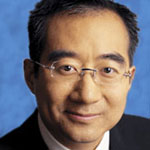
Anterior Immediate Tooth Replacement: Lessons Learned From 20 Years
Joseph Kan, DDS, MS
Broadcast 1 –July 20, 2017 @ 7 PM ET
Achieving anterior implant esthetics is a challenging endeavor. Understanding the biologic and physiologic limitations of the soft and hard tissue will facilitate predictability in simple to complex esthetic situations. This lecture will focus on current implant treatment philosophies and methodologies for immediate tooth replacement in the esthetic zone.
- Discuss prognostic keys for predictable anterior immediate tooth replacement
- Explain what is known and unknown about bone grafting in socket gaps
- Discuss whether buccal bone and/or soft tissue grafting is needed for successful immediate tooth replacement
Learning Objectives
Register Now

Anterior Immediate Tooth Replacement: Lessons Learned From 20 Years
Joseph Kan, DDS, MS
Originally Broadcast – July 20, 2017
Achieving anterior implant esthetics is a challenging endeavor. Understanding the biologic and physiologic limitations of the soft and hard tissue will facilitate predictability in simple to complex esthetic situations. This lecture will focus on current implant treatment philosophies and methodologies for immediate tooth replacement in the esthetic zone.
- Discuss prognostic keys for predictable anterior immediate tooth replacement
- Explain what is known and unknown about bone grafting in socket gaps
- Discuss whether buccal bone and/or soft tissue grafting is needed for successful immediate tooth replacement
Learning Objectives
View On-Demand CE Webinar

New Ceramics, CAD/CAM, Implants, and the APC-Zirconia-Bonding Concept
Broadcast 7 –January 18, 2018@ 7 PM ET
This presentation will address issues surrounding CAM/CAM and new ceramics in implant dentistry. It will discuss esthetic, less-invasive, and long-term functional ceramic treatment options and explain new, high-translucent zirconia ceramics, along with their handling and broad indications as monolithic full-contour restorations. Additionally, the simple APC-zirconia-bonding concept and other ceramic bonding strategies based on decades of research and the latest scientific evidence will be introduced and illuminated.
- Identify modern ceramic materials and their indications
- Discuss the history and development of new zirconia ceramics and CAD/CAM technologies and their application in implant dentistry
- Describe proper bonding protocols for zirconia and other ceramic restorations on teeth and implants
Learning Objectives
Register Now
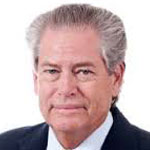
Implant Biomechanics and Material Selection for Predictable Results
Steve Hurson
Broadcast 4 – October 12, 2017 @ 7 PM ET
This presentation will examine the multifactorial science of marginal bone maintenance and remodeling. It will review the science of how implant materials, rough and smooth surfaces, and connection type all play a role, and will present an application-based guideline for the types of implants to use to conform to these scientific principles. The biomechanics of implant prosthetics will also be discussed. A practical guideline for restorative material selection and dental laboratory techniques also will be presented.
- Describe the importance of properly matched components, precise fit, and accurate laboratory processing for trouble-free restorations
- Explain why careful selection of restorative materials is needed to obtain a soft-tissue seal to the restorative components on implants placed at bone level
- Discuss how the selection and application of the proper implant connection type is necessary to build a good base to prevent marginal bone loss
Learning Objectives
Register Now


